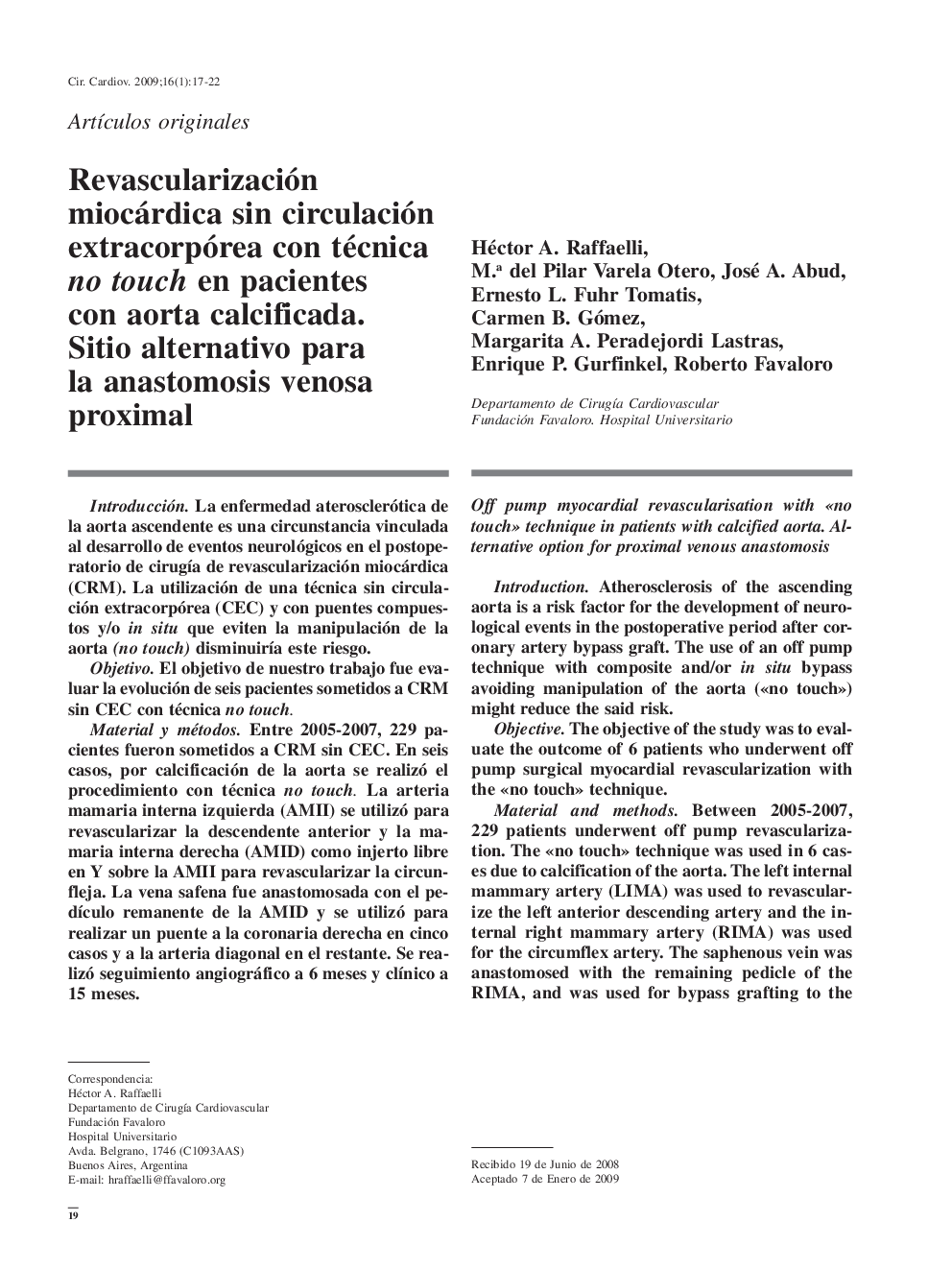| Article ID | Journal | Published Year | Pages | File Type |
|---|---|---|---|---|
| 2908104 | Cirugía Cardiovascular | 2009 | 6 Pages |
IntroducciónLa enfermedad aterosclerótica de la aorta ascendente es una circunstancia vinculada al desarrollo de eventos neurológicos en el postoperatorio de cirugía de revascularización miocárdica (CRM). La utilización de una técnica sin circulación extracorpórea (CEC) y con puentes compuestos y/o in situ que eviten la manipulación de la aorta (no touch) disminuiría este riesgo.ObjetivoEl objetivo de nuestro trabajo fue evaluar la evolución de seis pacientes sometidos a CRM sin CEC con técnica no touch.Material y métodosEntre 2005–2007, 229 pacientes fueron sometidos a CRM sin CEC. En seis casos, por calcificación de la aorta se realizó el procedimiento con técnica no touch. La arteria mamaria interna izquierda (AMII) se utilizó para revascularizar la descendente anterior y la mamaria interna derecha (AMID) como injerto libre en y sobre la Amii para revascularizar la circunfleja. La vena safena fue anastomosada con el pedículo remanente de la AMID y se utilizó para realizar un puente a la coronaria derecha en cinco casos y a la arteria diagonal en el restante. se realizó seguimiento angiográfico a 6 meses y clínico a 15 meses.ResultadosEn el postoperatorio ningún paciente presentó eventos neurológicos, todos fueron dados de alta, y en el seguimiento se encuentran asintomáticos y no han requerido reintervenciones. Por angiografía todos los puentes permanecen permeables.ConclusiónEsta variante quirúrgica de la CRM sin CEC con técnica no touch parece ser una opción eficaz para pacientes con enfermedad coronaria y calcificación de la aorta.
IntroductionAtherosclerosis of the ascending aorta is a risk factor for the development of neurological events in the postoperative period after coronary artery bypass graft. The use of an off pump technique with composite and/or in situ bypass avoi ding manipulation of the aorta («no touch») might reduce the said risk.ObjectiveThe objective of the study was to evaluate the outcome of 6 patients who underwent off pump surgical myocardial revascularization with the «no touch» technique.Material and methodsBetween 2005-2007, 229 patients underwent off pump revascularization. The «no touch» technique was used in 6 cases due to calcification of the aorta. The left internal mammary artery (LIMA) was used to revascularize the left anterior descending artery and the internal right mammary artery (RIMA) was used for the circumflex artery. the saphenous vein was anastomosed with the remaining pedicle of the RIMA, and was used for bypass grafting to the posterior descending artery in 5 cases and to the remaining diagonal artery. Follow up angiograms were performed at 6 months.ResultsNo patient developed neurological events during the post-op period. All the patients were discharged, and at 15-month follow-up they are all asymptomatic, and have not required any further intervention. All grafts are patent.ConclusionOff-pump revascularization with the «no touch» technique appears to be an effective surgical option for patients with coronary artery disease and calcification of the aorta.
